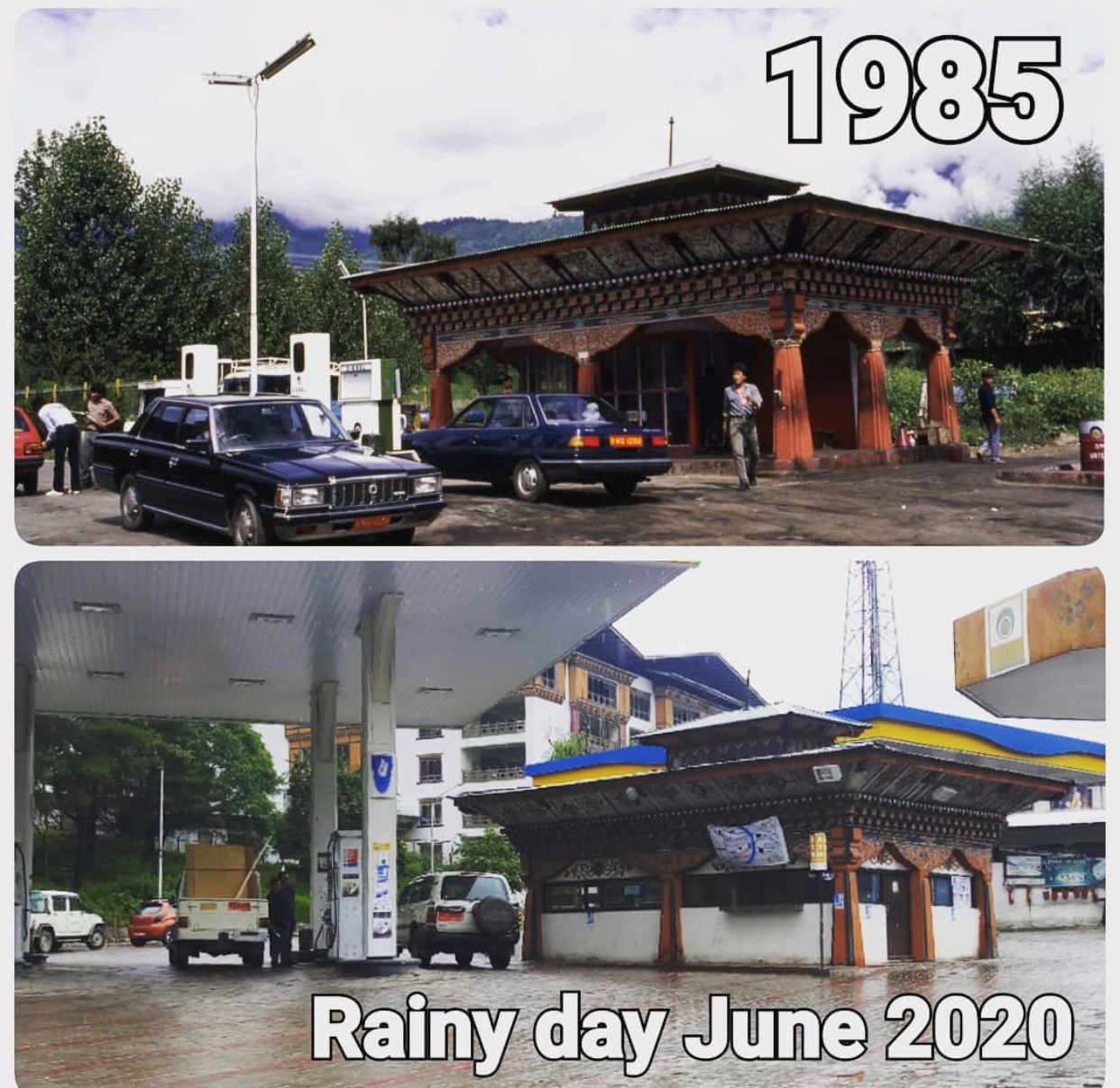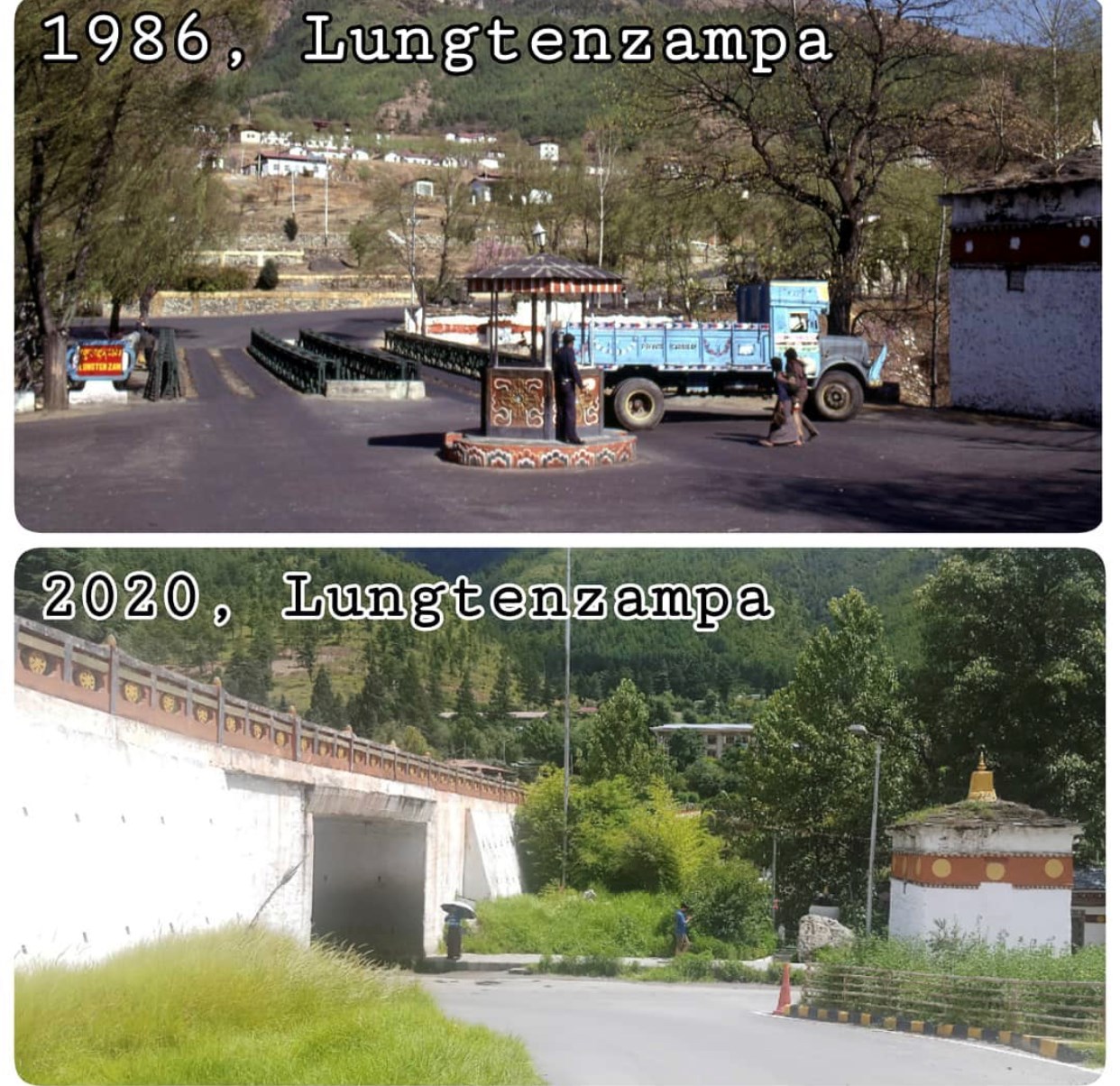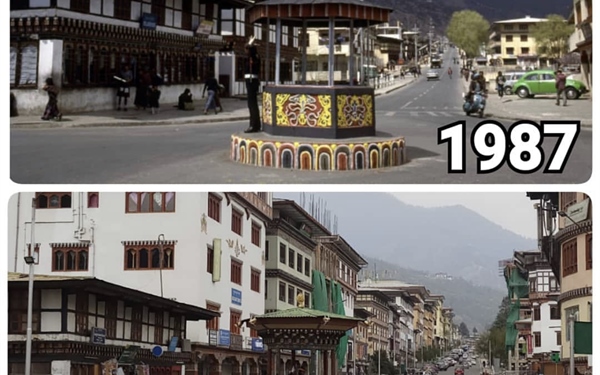- Oct 04, 2020
- 14523
The Revolution of Bhutanese Architecture in decades.
Modernization threatens the sustainability of Bhutanese architecture. Modern materials are not eco-friendly. More energy is consumed in modern buildings due to a lack of natural insulation to maintain the temperature in the room. Tall buildings are vulnerable to natural disasters like earthquakes. Public spaces are compromised in urban areas to accommodate more buildings.
Bhutan has a unique architecture and construction style. Architecture constitutes an important aspect of tangible culture. Bhutanese often showcase and take pride in the unique Bhutanese architecture. Preservation and promotion of culture are one of the pillars of Gross National Happiness. The size of the structures, the materials, and the colors used on the buildings are intricate and symbolic to the Bhutanese. However, Bhutanese architecture faces acute challenges with rapid globalization and technological revolutions.

In the past massive structures like dzongs (fortress ), towers, bridges, and houses were built using materials like mud, stone, and wood. These materials were extracted from nature with minimum negative implications. However, concrete, bricks, and steel are quickly replacing traditional materials. Bricks, cement, and steel factories contribute massively to air pollution.
In the olden days, energy consumption for the houses was minimal given the insulation properties of the locally available materials. However, modern structures require a system to heat the space using extra energy. We are aware of the benefits of traditional materials but we chose modern materials for the luxury, speed of construction, and cost-effectiveness.

Bhutanese architecture has unique features. One of them is that the colors used have symbolic meaning representing the natural elements. There is also the traditional law guiding the usage of different colors in different structures. For example, the Keymar, a red-colored band is entitled only for the monastic structures like dzongs, Lhakhang, and Chortens.
Modern materials have lots of advantages over the traditional materials and this is eroding the architectural essence as woods are replaced by glass-reinforced concrete (GRC). In GRC the concrete is directly poured on the mold or formwork and replicated likewise without considering the size and style. Therefore, to preserve our unique architecture, rules and regulations must be implemented strictly. On top of this, Bhutanese architects, engineers, bureaucrats, and the private sector must come together to preserve the Bhutanese architecture.
JDWNHR Thimphu
Today, Bhutanese build structures that are five or more storied compared to two or three-storied houses in the past. Bhutan is an earthquake-prone zone that falls on the seismic zone IV and V. The construction of vertical buildings would make them more vulnerable in times of natural disasters. Hence, the Bhutanese should be encouraged to adapt to traditional buildings with the addition of seismic resilient features to them.
There are some villages in Bhutan with intact traditional houses. It is seen in Rinchengang in Wangduephodrang and Trong in Zhemgang. These villages are not only visual feast but also embody the community vitality they share. In the olden days, architecture had more meaning. The entry to the village is marked by a Chorten. Houses are clustered together with common areas for gathering. Monasteries are located on higher elevation. People gathered in the monasteries during the annual rituals and festivals. However, with urbanization, public spaces are given the least importance.
Though people know the importance of green spaces, these are compromised due to the scarcity of land in urban areas. Therefore, it is high time that the government comes up with the plans to emphasize on regional development to reduce the eye-sore buildings in the urban areas.
With the current pace of development in Bhutan, there is a high risk of losing cultural and architectural identity altogether. Bhutanese must preserve them by revising the building guidelines and giving importance to traditional architecture.
Photographs; Imprint Thimphu
